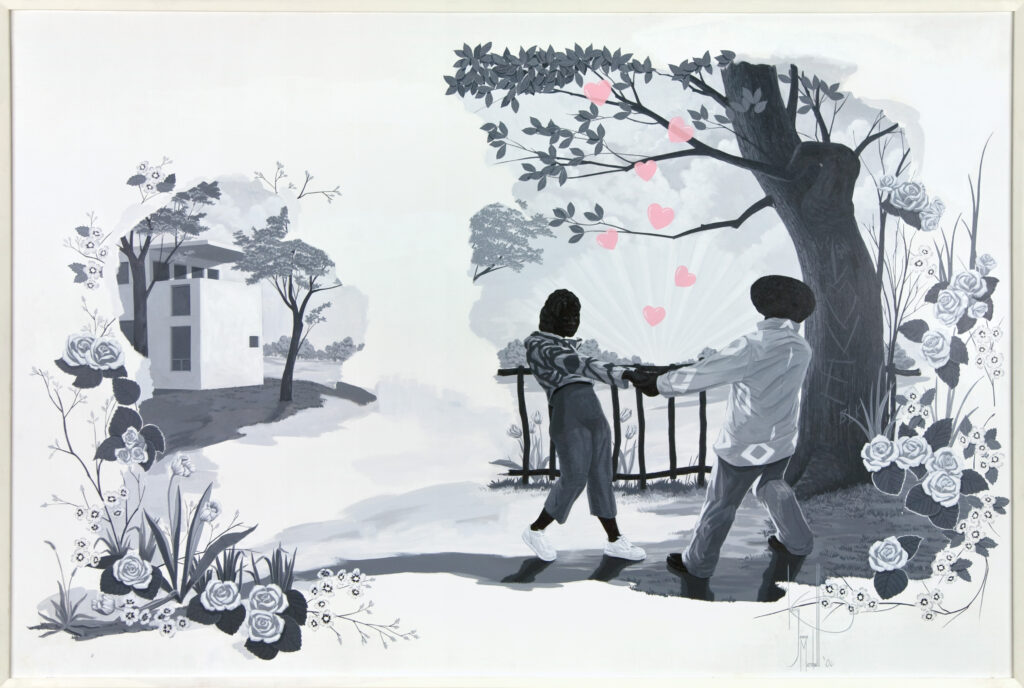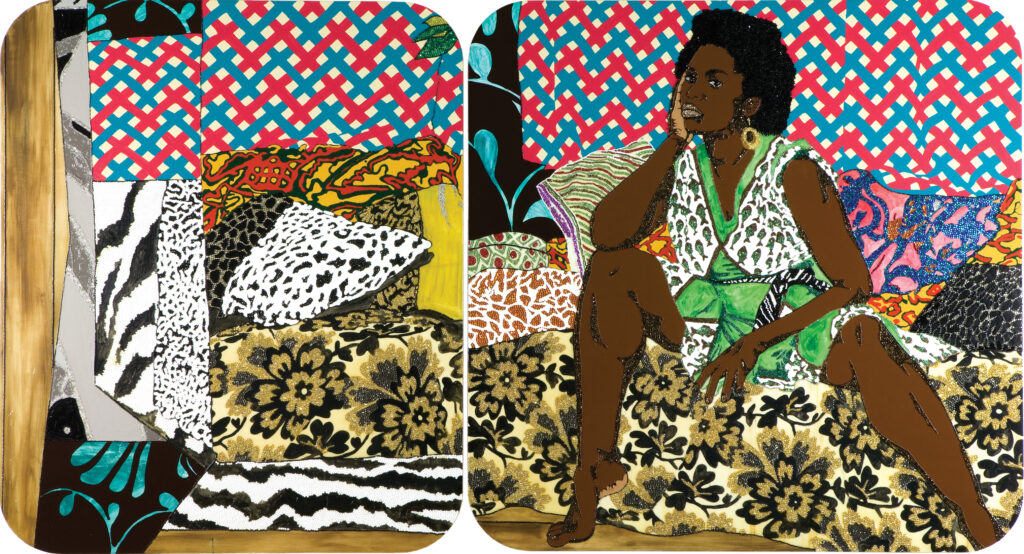If you could curate an art exhibit showcasing the work of some of the most celebrated African American artists of the last four decades, what would it look like? The Barnes Foundation sought to answer that question with their latest special exhibition. Drawn from the Rubell Family Collection, 30 Americans, brings together some of the best working contemporary artists of our time.
Curated by art scholar Gwendolyn DuBois Shaw, 30 Americans, is a complex, vibrant exhibit featuring work from celebrated artists like Jean-Michel Basquiat, Carrie Mae Weems, Lorna Simpson, Mickalene Thomas, Kerry James Marshall, and Kehinde Wiley.

Shaw is an associate professor of art history at the University of Pennsylvania and is excited that The Barnes could host 30 Americans. “30 Americans has been, without question, this century’s most impactful exhibition of work by contemporary artists of African descent,” Shaw said. This is the first time that the internationally renowned show is appearing in the upper Northeast United States in almost a decade. Shaw believes 30 Americans will serve as an influence to artists and collectors nationwide in blazing their own paths.

From sprawling, acrylic paintings to human-sized figures that look like they walked out of a dream, 30 Americans consistently redefines the boundaries of who gets to share their story via art.
Maybe it’s Kehinde Wiley’s Equestrian Portrait of the Count Duke Olivares (2005), a gigantic portrait of a young Black man with hightop Nike sneakers triumphantly sitting atop a horse. Or maybe it might be the social commentary of Nina Chanel Abney’s Class of 2007 (2007), a satirical painting of prison inmates designed to reflect the high number of Black men in jails and the low number of Black students in art schools. No matter which piece of art that you examine in 30 Americans, it’s impossible not to be spellbound by such provocative, sincere work that examines nuanced moments of the Black experience.

Jean-Michel Basquiat’s two pieces on view in the exhibition, Bird on Money (1981) and One Million Yen (1982) reflect the excess of the 1980s and Basquiat’s fascination with Black stars like jazz musician Charlie Parker. The rawness of his paint strokes evoke the late American artist Cy Twombly, but it is the layering of words, colors and shapes in Basquiat’s pieces that allude to deeper messages. Basquiat has achieved iconic status since his passing in 1988, but seeing his work in person inspires questions that perhaps no one alive can answer.

Women artists such as Mickalene Thomas use mixed media like rhinestones and enamel on wood panels to illuminate the inherent beauty of Black women. “Beauty has always been an element of discussion for Black women, whether or not we were the ones having the conversation,” Thomas said. In Baby I’m Ready Now (2007), Thomas uses collage to affirm Black women through a vivid portrait of an attractive Black woman sitting on a sofa with various patterns and colors floating around her.
From neon lights to a monochromatic abstract painting that combines coal dust and acrylic paint, Glenn Ligon’s mesmerizes viewers with subtle, symbolic details. Stranger #21 (2005) was inspired by Ligon’s affinity for American history and literature like Black writer James Baldwin’s essay “Stranger in the Village.” In the essay, Baldwin described what it was like to be in an all-white Swiss town in the 1950s. To mirror the experience, Ligon created a massive, all-black piece with acrylic paint and sparking coal dust to simultaneously show darkness and light. The duality is designed to make viewers remember that pressure makes coal transition into diamonds and parallel the experience for many Black people worldwide.
With decades of Black artists showcasing work commenting on themes as joyous as love to social issues as troubling as mass incarceration, 30 Americans succeeds by allowing each artist to share their perspectives. In a society that frequently seeks to subdue Black voices, 30 Americans is an intriguing example of what can happen when you let often untold stories the space to thrive.
30 Americans is on view until January 12, 2020.
Lead image: Jean-Michel Basquiat. Bird on Money, 1981. Courtesy of Rubell Family Collection, Miami

